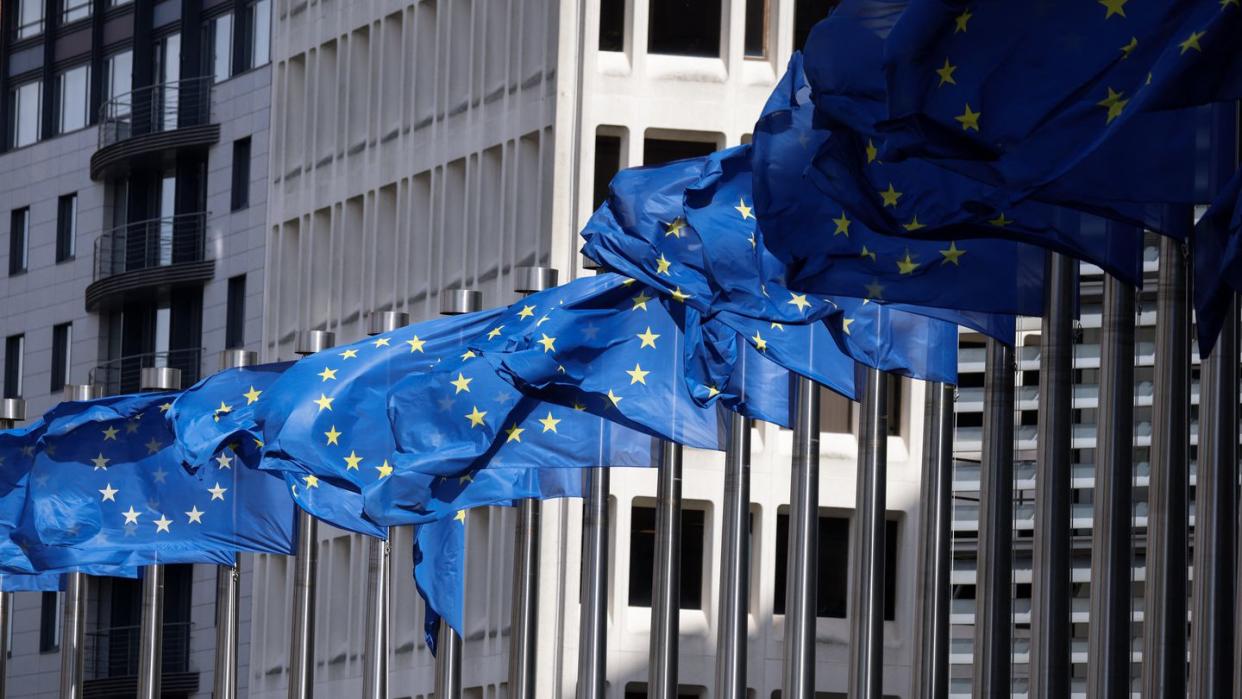The EU’s fresh designs for funding a defense resurgence, explained

BERLIN — The European Union is gearing up to boost defense spending across the continent amid the threat from Russia and fears of a wavering U.S. commitment, creating or expanding avenues for funding defense projects through EU-level institutions.
The collection of small moves aimed at steering the Brussels bureaucracy towards defense outcomes effectively erodes a longstanding taboo, as the bloc’s foundational texts were interpreted as leaving military spending entirely to member nations.
The funds newly made available for research and development and potentially for military procurement could reach into the billions of euros, according to analysts. The reshuffling of EU decision-makers through elections this year has the potential to strengthen these trends.
The watershed moment came in the form of Russia’s full-scale invasion of Ukraine in late February 2022, bringing war to the doorstep of the European project. Since then, most EU countries have increased their national defense budgets. Meanwhile, leaders in Brussels looked for ways to supplement the capitals’ efforts.
For example, the bloc leveraged its resources to set in motion a joint purchase of ammunition for Ukraine in a €500 million ($537 million) package just four days after the invasion commenced. It marked the first time in history that the EU purchased lethal weapons. Since then, Brussels has mobilized €11.1 billion ($11.9 billion) on Ukraine’s behalf.
The inanely named European Peace Facility, under which the defense-financing scheme is playing out, has emerged as a key mechanism. Formed in 2021, it’s effectively an account outside the regular books, which means it faces fewer restrictions on what it can be used for.
Meanwhile, the European Investment Bank has loosened its rules on lending for military projects. The bank provides favorable loans and technical assistance to European companies to foster home-grown innovation. Until April of this year, the bank could only fund projects that would receive more than half of their revenue from civilian uses. While the bank still won’t fund purely military initiatives, the scrapping of the fifty-percent rule, encouraged by the EU’s member states in March and then swiftly implemented, has opened the door to funding technologies that may be primarily of military use.
“Unfortunately, the war in Ukraine has made it clear that we need to reinforce Europe´s security and defense industry,” an EIB spokesperson told Defense News in an email. “As the financial arm of the EU, we must contribute to ensuring Europe’s peace and security.”
The bank’s president, Nadia Calviño, has declared defense and security a “strategic priority,” saying in February that the bank was ready to play a more active role.
More red tape was cut with the implementation of a “one-stop shop,” as she put it – a dedicated office to work with defense-related companies seeking the bank’s financial support.
While far from a replacement for national spending, the bank’s funds are significant. The EIB has set itself a target of funding €8 billion ($7.51 billion) through its Strategic European Security Initiative until the end of 2027, of which it has already disbursed €2 billion ($2.15 billion) in the program’s first two years.
The spokesperson, who asked to remain unnamed to be able to speak more freely, said that the bank’s managers expect key areas for funding through this avenue will include quantum computing, semiconductors, space, materials, biodefence, autonomous systems and sensing technologies.
Even more backing is now possible through indirect funding – equity, securitization, and guarantee products by the bank and its subsidiaries – following a revision of the rules in early May, the spokesperson added.
The EIB’s new clout in the security sphere – even if still ostensibly with the aim of developing civilian technologies – is in addition to existing EU money sources like European Defence Fund, which provides an additional €8 billion available to national governments until 2027.
On the procurement side, there has been talk about repurposing the European Stability Mechanism – created to assist struggling countries and stabilize the Eurozone – to be able to provide defense-related funding, potentially even for purchasing military equipment by Eurozone countries.
ESM Managing Director Pierre Gramegna has advocated for the idea publicly and privately. He indicated there had been considerable interest across the continent, though unanimity is needed to reform the fund.
“I have been reaching out to countries … by visiting the 20 member countries of the euro area, which are the 20 members of the ESM, to get views on how we could make the ESM in the future even more meaningful, especially in the times of external crisis,” Gramegna said at a Eurogroup meeting in March of this year.
The most notable holdout remains Italy, which calls the ESM obsolete and has blocked any recent attempts to reform it. “The point of Italy is to say we need an ESM that can be used on more occasions. Now, on one issue where we have already a solution, they are unfortunately not yet convinced,” Gramega said in an interview with NBC.
The ESM functions like an intergovernmental treaty, thereby putting it outside of the defense caveats associated with the EU budget. It is conceivable, for example, that the mechanism could dole out cheap cash for the procurement of weapons. At €422 billion ($453 billion), the lending capacity of the ESM is far greater than any EU country’s military budget.
European Commission President Ursula von der Leyen, who has been campaigning for a second term, has pledged to install for the first time a commissioner for defense following her reelection, a move that could further jolt the bloc’s defense and security muscles.
Still, some insiders believe the pace of change will be slow, and there are still differing opinions about what the defense of Ukraine means for Europe.
“Things usually only happen fast if there is a super crisis which is not the case right now,” said Manica Hauptmann, political head of the Representation of the European Commission in Berlin. “It’s super open how these discussions will develop.”

